We took a short break from the Alienist books two weeks ago to recognise our author’s birthday with the first half of a special investigative history blog examining the truth behind the legendary panthers of Davon Wood who feature in The Legend of Broken, Mr. Carr’s 2012 epic set in Northern Germany during the Dark Ages. We discovered in Part One that the impressive proportions of “Davon panthers”–that is, nine-foot bodies from nose to tail base and weights of over 500lbs (226kg)–ruled out the possibility of the great cats having been relatives of either the European (or Eurasian) jaguar (Panthera gombaszoegensis) or the ancestors of modern African lions (Panthera leo), and instead favoured the hypothesis that Davon panthers would more likely have been relatives of the equally impressive European (or Eurasian) cave lion (Panthera spelaea spelaea)1, a Pleistocene felid species capable of reaching weights of up to 617lbs (280kg).
Having established that the lengths and weights of the Davon panther fall into the same ranges as those of the European cave lion, we open Part Two with the more intriguing question of lifestyle: do the hunting styles, prey choices, and environmental preferences of Davon panthers also support the European cave lion hypothesis? We will be reviewing fascinating research into mitochondrial DNA and bone collagen isotopic signatures to answer this question, as well as investigating possible extinction hypotheses for the European cave lion and the implications these have for the likelihood of Davon panthers having really survived through to the Dark Ages.
Lone cats, not lone wolves.
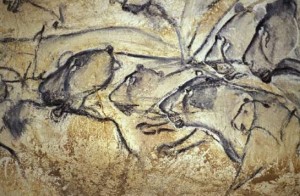
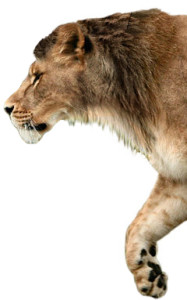
An independent line of enquiry utilising bone collagen isotopic signatures has recently provided more direct evidence for the hunting behaviour of European cave lions and competing predator species throughout Europe during the Pleistocene. Because the ratios of stable nitrogen and carbon isotopes for prey species are recorded in the tissues of predators, Pleistocene predator-prey networks have been able to be reconstructed using bone collagen isotopic signatures to a degree of accuracy that has even allowed the proportional contributions of specific prey species in the diets of different predators to be determined (Yeakel et al., 2013). The first comprehensive study of European cave lion prey choices was conducted by Bocherens et al. (2011) using the fossilised remains of various predator species and their potential prey species from 25 sites around Belgium, Germany, France, and Switzerland that were dated as falling into one of two time periods: before the Last Glacial Maximum (pre-LGM: i.e., approx. 24,000 to 40,000 years ago), and after the Last Glacial Maximum (post-LGM: i.e., approx. 12,000 to 14,000 years ago). Interestingly, the cave lions showed a wide scattering of isotopic values, suggesting that different individuals were preying on species with contrasting isotopic signatures, a finding that the authors argue strongly supports the hypothesis that cave lions were solitary hunters with individual prey preferences rather than hunting collectively in prides (Bocherens et al., 2011).
Bocherens et al. (2011) also noted that the specific species preyed upon by European cave lions also provide evidence for solitary hunting behaviour in and of themselves. Specifically, the suggestion that European cave lions preyed on juvenile megaherbivores such as mammoth calves, which would require collective hunting, was not supported by the study. Instead, pre-LGM cave lions showed isotopic values indicative of strong individual prey preferences, with one lion appearing to prefer reindeer, another woolly rhinoceros, while others preferred horses and cave bears (presumably cubs left alone in cave systems when adult cave bears foraged for food). Moreover, the authors note that the results of their study support a theory previously put forth on the basis of fossil evidence that pre-LGM cave lions may have been competitively displaced by European cave hyenas before the hyena population started to decline during the LGM. That is, the cave lion is suggested to have been at a competitive disadvantage against the smaller but more sociable cave hyena, consequently providing further support for the hypothesis that the European cave lion was a solitary hunter.
Although Bocherens et al. (2011) found no evidence of a strong prey preference for bison either pre- or post-LGM, a previously hypothesised prey choice for the cave lion due to the finding of a particularly well preserved pre-LGM Alaskan bison known as “Blue Babe” that still retains the bite marks of a European cave lion along with the embedded tip of a cave lion tooth, bone collagen isotopic signature analysis of a recent cave lion find from Northeastern Russia believed to date from the Mid-to-Late Pleistocene revealed prey preferences of bison, horse, and muskox, rather than the reindeer, woolly rhinoceros, and cave bear preferences of cave lions in Central Europe (Kirillova et al., 2014). In addition to further strengthening the suggestion that European cave lions had strong individualistic prey preferences, these results are consistent with Yeakel et al.’s (2013) more recent finding that pre-LGM European cave lions obtained between 60-65% of their diets from locally derived herbivores, suggesting that the species had some degree of opportunistic flexibility.
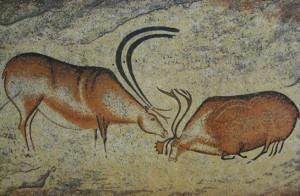
Taken together, the results of both studies support the hypothesis that the European cave lion was a solitary hunter, just as the legendary Davon panthers were described as being in The Legend of Broken. It it also worth noting that Davon panthers were not described as having any mane growth, another characteristic they appear to share with the European cave lion, and one that has, coincidentally, also been hypothesised to be due to their solitary lifestyles. In modern lion populations, mane development has been hypothesised to relate to social behaviour both within and between prides, such as competition over females (Bocherens et al., 2011; Stuart & Lister, 2011). The poor mane development in the European cave lion, as documented in Palaeolithic cave art, has therefore been suggested to provide further evidence that the cats maintained solitary lifestyles rather than cohabiting in large prides like the modern lion (Bocherens et al., 2011).
Finally, the most recent cave lion find in Northeastern Russia has provided a tantalising hint that Davon panthers may have one more physical trait in common with the European cave lion, although this one doesn’t relate to social behaviour. “Bundles of reddish fur” (Kirillova et al., 2014, pp. 102) were found alongside the remains of the cave lion in Russia. Academically, this is an important find as no skin or fur samples of cave lions have previously been found, and the fur of the Russian lion has different characteristics to that of modern lions (e.g., the bottom layer is a dense, insulating underfur not present in the modern lion, while the top layer is an awn hair that apparently serves a protective role for the underfur). For us, however, it is yet another interesting coincidence as Davon panthers were described as occasionally reaching shades of rich “dark gold” that one might presume could have taken on a reddish tint if glimpsed in the right light.
To summarise, given that Davon panthers and European cave lions appear to have shared the same solitary hunting preferences, along with sharing physical characteristics such as immense size, poor mane development, and even colouring, it therefore seems reasonable to conclude that the legendary panthers of Davon Wood were clearly intended to be living descendants of European cave lions.
Could they really have survived?
Having now established our species, the question must be asked whether the European cave lion could ever really have survived through to the Dark Ages. Unfortunately, this is a question that is difficult, if not impossible, to answer because we still don’t know why the European cave lion became extinct in the first place. Stuart and Lister (2011) recently discussed four separate hypotheses in their recent paper examining the extinction chronology of the cave lion (pp. 2337):
“(1) the predator disappeared because of extinction of its prey species — the ‘keystone hypothesis’ of Owen Smith (1989); (2) prey numbers and/or their geographical ranges were drastically reduced at the time (even if they subsequently recovered); (3) the widespread reduction in open habitats, and spread of shrubs and trees; (4) human impact.”
As should be clear from the preceding discussion, the ‘keystone hypothesis’ is highly unlikely. Many of the European cave lion’s preferred prey species, including the cave bear, became extinct long before the cave lion, while the cave lion’s favoured prey species post-LGM, the reindeer, is still alive today. However, the fact that cave lions were so heavily dependent on reindeer post-LGM means that the second hypothesis, taken in combination with the third and fourth, must be considered much more likely.
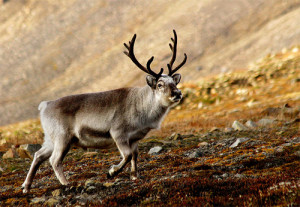
Taking the migration patterns of reindeer into account, it might not be seen as surprising that the European cave lion’s diet changed pre-LGM to post-LGM in Northern Central Europe where most of the samples used in the bone collagen isotopic signature studies were found. That is, reindeer did not maintain a strong presence in the region pre-LGM, while their presence increased significantly post-LGM. Consistent with Yeakel et al.’s (2013) finding that European cave lions obtained between 60-65% of their diets from locally derived herbivores, their newfound dependence on the species as a food source post-LGM is hardly surprising, especially given the extinction of several of their other preferred prey species, such as cave bears, during the LGM itself. What is surprising is that the European cave lion appears to have become extinct around the same time reindeer moved exclusively into Scandinavia.
Why is this surprising? First, the European cave lion had proven itself capable of adapting to changes in preferred prey species in the past, and many other prey species such as wild horse and red deer were still in the area. Second, the increase in temperature during the Holocene should have caused the European cave lion fewer problems than other species, including reindeer. After all, they had survived in warmer climates in the same regions pre-LGM. However, even if the European cave lion could not cope with the increase in temperature and corresponding change in habitat, one has to wonder why they did not follow their primary prey species north into Scandinavia in order to survive. Third, the geographical range of the European cave lion was enormous. Not only did they occupy Northern Central Europe, they also occupied large areas of Russia along with Beringia.
At this stage, the hypotheses become speculative. In Yeakel et al.’s (2013) study examining six different predator-prey networks during the Pleistocene, evidence was obtained that other predators such as canines (e.g., wolves) and Neanderthals managed to maintain more flexible generalist diets post-LGM than cave lions, although there was an increased dependence on reindeer across the entire predator guild. Given previous evidence that predators who could take advantage of collective hunting methods consistently maintained a competitive advantage over the solitary European cave lion, one has to wonder whether the competition arising from the increased presence of collective hunting species in Eurasia such as wolves, the modern lion (a species that was expanding into Europe), Neanderthals, and the ever more dominant Homo sapiens simply meant that the cave lion had become competitively excluded? That is, perhaps they had already been competitively excluded from preying on the herbivores that were left in the region (e.g., red deer and wild horse) once their preferred prey species moved north.
As for the possibility that the extinction was due to human impact, although evidence has been found that early Homo sapiens were capable of hunting cave lions opportunistically, there is no evidence at present the European cave lion was hunted regularly by humans (Blasco et al., 2010), so extinction due to over-hunting by humans is extremely unlikely. However, habitat loss and competitive exclusion due to human impact is well within the realm of possibility.
So, could they have survived? I’ll let you, the readers, make up your own minds on that one.
Footnotes
1. Henceforth, the “European (or Eurasian) cave lion” will be referred to as the “European cave lion”. The “(or Eurasian)” is implied. Moreover, on the basis of Barnett et al.’s (2009) DNA evidence showing that the cave lion is a separate species to the modern lion, I have chosen to use the species classification preferred by Marciszak and colleagues (i.e., Panthera spelaea fossilis and Panthera spelaea spelaea). See the footnotes of Part One for more information.
References
- Barnett, R., Shapiro, B., Barnes, I., Ho, S. Y. W., Burger, J., Yamaguchi, N., Higham, T. F. G., Wheeler, H. T., Rosendahl, W., Sher, A. V., Sotnikova, M., Kuznetsova, T., Baryshnikov, G. F., Martin, L. D., Harington, C. R., Burns, J. A., & Cooper, A. (2009). Phylogeography of lions (Panthera leo ssp.) reveals three distinct taxa and a late Pleistocene reduction in genetic diversity. Molecular Ecology, 18, 1668-1677.
- Blasco, R., Rosell, J., Arsuaga, J. L., Bermudez de Castro, J. M., & Carbonell, E. (2010). The hunted hunter: The capture of a lion (Panthera leo fossilis) at the Gran Dolina site, Sierra de Atapuerca, Spain. Journal of Archaeological Science, 37, 2051-2060.
- Bocherens, H., Drucker, D. G., Bonjean, D., Bridault, A., Conard, N. J., Cupillard, C., Germonpre, M., Honeisen, M., Munzel, S. C., Napierala, H., Patou-Mathis, M., Stephan, E., Uerpmann, H., & Ziegler, R. (2011). Isotopic evidence for dietary ecology of cave lion (Panthera spelaea) in North-Western Europe: Prey choice, competition and implications for extinction. Quaternary International, 245, 249-261.
- Burger, J., Rosendahl, W., Loreille, O., Hemmer, H., Eriksson, T., Gotherstrom, A., Hiller, J., Collins, M. J., Wess, T., & Alt, K. W. (2004). Molecular phylogeny of the extinct cave lion Panthera leo spelaea. Molecular Phylogenetics and Evolution, 30, 841-849.
- Guzvica, G. (1998). Panthera spelaea (Goldfuss 1810) from North-Western Croatia. Geologia Croatica, 51, 7-14.
- Kirillova, I. V., Chernova, O. F., Krylovich, O. V., Tiunov, A. V., & Shidlovskiy, F. K. (2014). A discovery of a cave lion (Panthera spelaea Goldfuss, 1810) skeleton in Russia. Doklady Biological Sciences, 455, 102-105.
- Marciszak, A., & Stefaniak, K. (2010). Two forms of cave lion: Middle Pleistocene Panthera spelaea fossils Reichenau, 1906 and Upper Pleistocene Panthera spelaea spelaea Goldfuss, 1810 from the Bisnik Cave, Poland. Neues Jahrbuch für Geologie und Paläontologie, 258, 339-351.
- Sommer, R. S., Kalbe, J., Ekstrom, J., Benecke, N., & Liljegren, R. (2014). Range dynamics of the reindeer in Europe during the last 25,000 years. Journal of Biogeography, 41, 298-306.
- Stuart, A. J., & Lister, A. M. (2011). Extinction chronology of the cave lion Panthera spelaea. Quaternary Science Reviews, 30, 2329-2340.
- Yeakel, J. D., Guimaraes Jr., P. R., Bocherens, H., & Koch, P. L. (2013). The impact of climate change on the structure of Pleistocene food webs across the mammoth steppe. Proceedings of the Royal Society B, 280, 1-10.

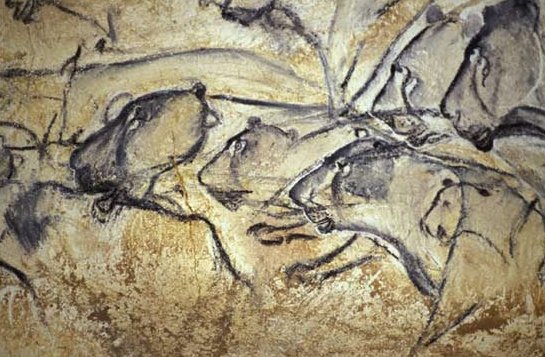


Just finished Broken having started out several times since its publishing. I was reading about Greek fire and happily happened upon your site. I’ve only read Carr’s The Alienist until now and found both books extremely good reads. I will become a recipient of your newsletter and will look forward to my first issue. Best regards
I’m glad that you enjoyed both The Alienist and The Legend of Broken. If you haven’t already tried it, you might also be interested in picking up The Angel of Darkness, the sequel to The Alienist; it’s my favourite of the two novels, although I love the original as well. And thanks for signing up to the newsletter; another issue should be released in the next couple of weeks.